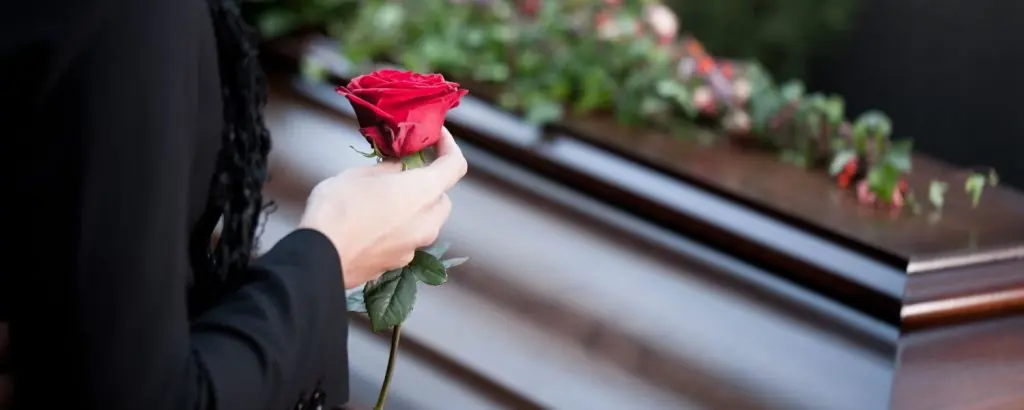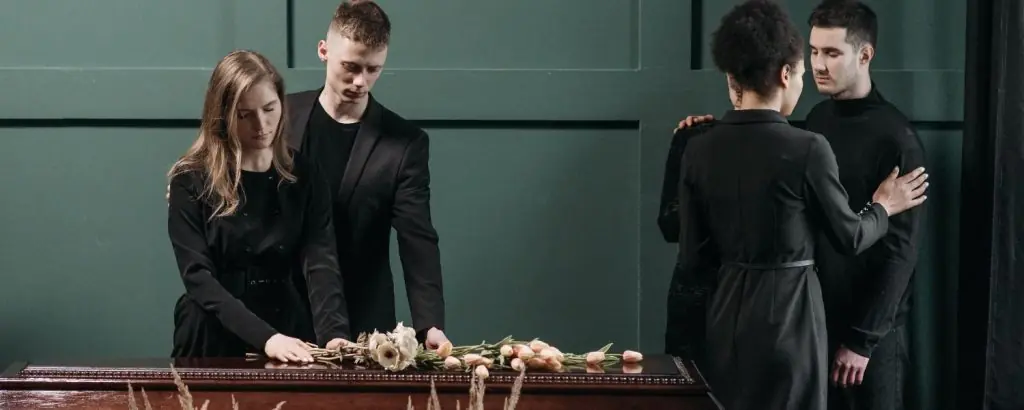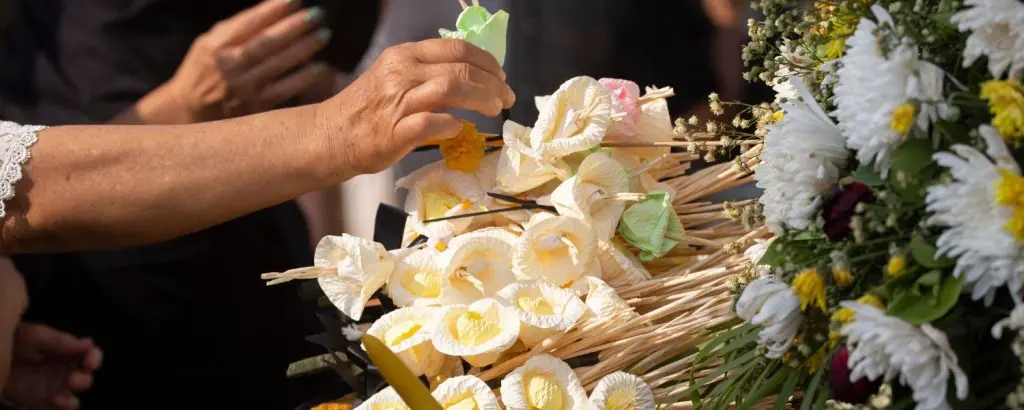
Death is an inevitable part of life, and when it comes, attending a funeral or memorial service is a common way to pay respects to the departed and support grieving loved ones. However, navigating the social customs and expectations surrounding these events can be challenging, especially if you are unfamiliar with funeral etiquette. In this blog, we will explore what to say, wear, and do at memorial services, shedding light on the proper conduct and etiquette to observe during such somber occasions.
Funeral Etiquette at Swanborough Funerals

Before delving into the broader spectrum of funeral etiquette, let’s take a moment to acknowledge Swanborough Funerals, a prominent funeral home serving communities with empathy and professionalism. Their commitment to guiding families through the grieving process and providing respectful memorial services has made them a trusted resource for those seeking comfort during loss.
Now, let’s explore the intricacies of funeral etiquette:
What to Say

One of the most challenging aspects of attending a funeral or memorial service is knowing what to say to the grieving family and other attendees. Here are some guidelines to help you navigate this sensitive aspect of funeral etiquette:
1. Offer Your Condolences
Begin by expressing your condolences to the grieving family. A simple, heartfelt “I’m sorry for your loss” or “My thoughts are with you” can provide comfort.
2. Share Memories
If you have a personal memory or story about the deceased, feel free to share it with the family. It can be a touching way to celebrate their life and provide solace to those left behind.
3. Avoid Clichés
While well-intentioned, phrases like “Everything happens for a reason” or “They’re in a better place” may not be well-received. It’s best to offer genuine sympathy and avoid clichés.
4. Listen Actively
Sometimes, the grieving family may want to talk about their loved one or feelings. Be a compassionate listener and offer your support through active listening.
5. Be Respectful
Understand that people grieve differently, and some may want space, while others may appreciate company. Respect their wishes and boundaries.
What to Wear

Funeral etiquette also extends to your attire when attending a memorial service. The crucial guideline is to attire oneself with modesty and respect:
1. Wear Dark Colors
Traditionally, dark colors like black, gray, or navy are considered appropriate for funerals. These colors symbolize mourning and respect.
2. Avoid Bright or Loud Attire
Vibrant colors, flashy patterns, and attention-grabbing clothing should be avoided, as they can be distracting and inappropriate for the occasion.
3. Dress Conservatively
Choose conservative clothing that covers your shoulders and knees. Avoid overly casual or revealing outfits.
4. Respect Religious Customs
If the memorial service has specific religious customs or dress codes, adhere to them.
5. Comfortable Shoes
Remember that you may be standing or walking for an extended period, so wear comfortable shoes suitable for the venue.
What to Do

Your actions at a funeral or memorial service can speak volumes about your respect and empathy for the grieving family. Here are some important funeral etiquette guidelines to follow:
1. Arrive on Time
Punctuality is crucial. Arrive at the venue a few minutes early to ensure you can pay your respects and offer condolences to the family.
2. Silence Your Phone
Before entering the service, turn your phone off or set it to silent mode. The last thing anyone wants is the disruption of a ringing phone during a solemn moment.
3. Follow the Service Protocol
Pay attention to the service program or instructions the officiant provides. This includes when to stand, sit, or participate in rituals or prayers.
4. Offer Practical Help
If you are close to the grieving family, offer assistance with tasks such as organizing food for mourners or helping with household chores during their time of need.
5. Send a Sympathy Card
After the service, it is customary to send a sympathy card to the grieving family expressing your condolences and support.
6. Attend the Reception
If there is a reception or gathering after the service, consider attending to offer additional support and share memories with other attendees.
7. Respect Cultural Differences
Be mindful of cultural or religious customs that may differ from your own and follow them accordingly.
Additional Considerations

In addition to the core aspects of funeral etiquette, it’s essential to be sensitive to the emotional needs of the grieving family. Here are a few additional considerations:
1. Children at Funerals
If you bring children to a funeral, prepare them beforehand for what to expect and how to behave. Supervise them closely to ensure they are respectful and quiet during the service.
2. Funeral Flowers
Presenting flowers to the funeral home or directly to the grieving family is a customary expression of sympathy. However, be aware that some cultures or families may have specific preferences regarding flowers, so it’s a good idea to check with the funeral home or consult the family.
3. Photography
Avoid taking photos or videos during the service unless explicitly permitted by the family. Funerals are private events, and it’s important to respect this privacy.
4. Offer Ongoing Support
Grief doesn’t end with the funeral. Reach out to the grieving family in the following weeks and months to offer your continued support and friendship. Visit here to know about cremation services.
Funeral etiquette reflects our respect for the deceased and our consideration for those who are mourning. By adhering to these guidelines and being mindful of the needs of the grieving family, you can navigate memorial services with grace and empathy. Swanborough Funerals, with its dedication to supporting families during their time of loss, exemplifies the importance of these customs in helping individuals find solace and closure.
 "/>
"/>
